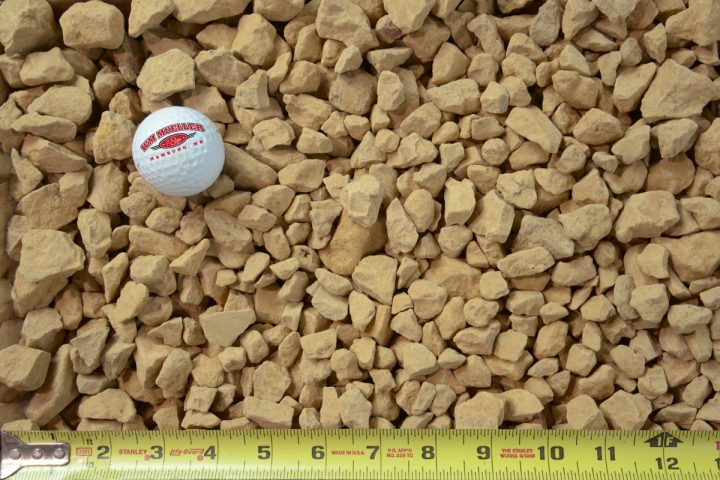Limestone 3/4″ Clear
Limestone 3/4″ Clear, also known as 3/4″ clean limestone, is a type of crushed limestone characterized by its specific size and lack of fines (smaller pieces).
3/4″ Clear Limestone is crushed limestone that has been screened so that the fines and small particles have been removed, leaving mainly 3/4″ sized pieces. It is known for its durability and strength.
Drainage Systems: 3/4″ clear limestone is often used for drainage applications. It is ideal for this because the lack of fine particles means water can pass through easily, reducing the risk of flooding or water damage.
Base Material: It can be used as a base material for driveways, sidewalks, and patios, providing a solid and stable layer upon which other materials like concrete or asphalt can be laid. For roads, it is often laid down as a base before asphalt is applied.
Landscaping: 3/4″ clear limestone can also be used in landscaping for decorative purposes. It can be used to create paths, as a ground cover in gardens, or to edge flower beds.
Construction Projects: In construction projects, it is used for its strength and durability. It can be used in the construction of buildings and other structures as a part of the foundation or as backfill material.
Pipe Bedding: Like other types of crushed stone, 3/4″ clear limestone is often used as pipe bedding to protect underground pipelines, distribute load evenly, and assist in drainage.
Water Filtration: Similarly, due to its ability to neutralize acidity, limestone is often used in industrial processes and wastewater treatment plants for water filtration and purification.
Retaining Walls: Limestone’s durability and attractive appearance make it a popular choice for the construction of retaining walls. The space between the stones can allow water to drain efficiently, reducing the pressure on the wall.
Remember, local regulations and guidelines may dictate how and where certain aggregate materials can be used, so it’s always important to check these before starting a project.


